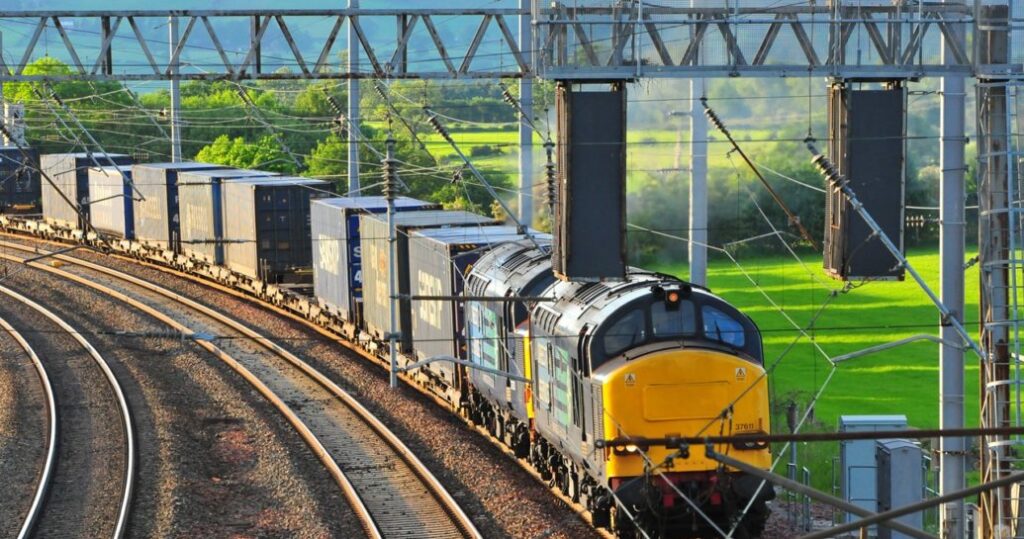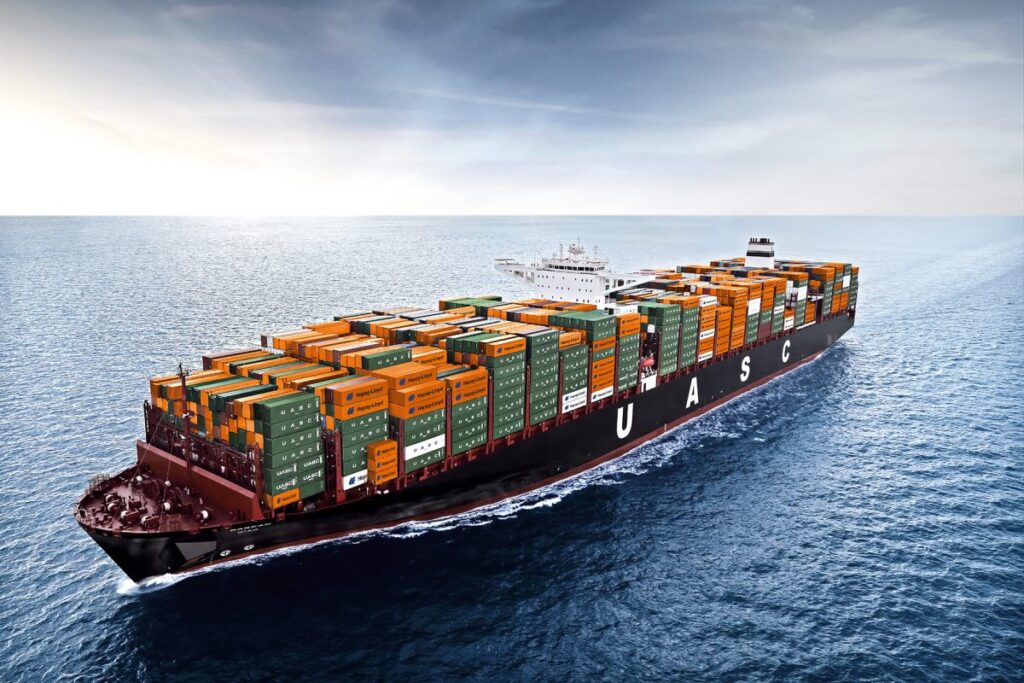- By Della tj
- October 29, 2025
- Rail Freight, Shipping
Businesses looking for speed, cost control, and environmental sustainability increasingly choose professional rail freight from Shenzhen to Belgium. This modern logistics solution bridges Asia and Europe with high efficiency, combining the speed of air freight with the affordability of sea transport. In this article, we explore its costs, transit times, documentation, real-life examples, and expert advice to help your company optimize its import/export operations.
What Is Professional Rail Freight and Why It’s Gaining Popularity?
Professional rail freight connects Shenzhen’s manufacturing centers with Belgium’s logistics hubs through the China–Europe Railway Express. This route is part of the Belt and Road Initiative, linking China to key European destinations such as Liège, Brussels, and Antwerp.
Advantages of Rail Freight:
- Faster than sea freight (12–18 days vs. 30–40 days)
- More affordable than air freight (up to 60% cheaper)
- Reliable schedules and consistent departures
- Eco-friendly with reduced carbon emissions
| Mode | Average Transit Time | Cost per CBM (USD) | Ideal Shipment Type |
|---|---|---|---|
| Rail Freight | 14–18 days | $180–$250 | Medium-volume cargo |
| Sea Freight | 30–40 days | $65–$90 | Large, heavy goods |
| Air Freight | 5–7 days | $500–$800 | Urgent, lightweight items |
Moreover, rail freight offers an ideal balance between cost and efficiency, making it perfect for companies seeking long-term supply chain stability.
How Does Rail Freight from Shenzhen to Belgium Work?
The rail freight process combines multimodal transport to ensure fast and reliable delivery. Cargo moves by train from Shenzhen to Xi’an or Chengdu, joins the China–Europe Railway Express, and arrives in Belgium before being distributed by truck.
Standard Steps in Rail Freight Shipping:
- Booking and Cargo Preparation: Shipment details confirmed and cargo packed according to EU standards.
- Export Customs Clearance: Freight forwarder handles declarations and inspection in Shenzhen.
- Rail Transport: Containers loaded onto scheduled trains to Europe.
- Import Customs Clearance in Belgium: Duties and VAT settled.
- Final Delivery: Cargo distributed to consignee via local transport.
Additionally, the route passes through key hubs in Kazakhstan, Russia, Belarus, and Poland, maintaining strong security and GPS tracking throughout the journey.
What Are the Shipping Costs for Rail Freight?
Shipping costs depend on volume, destination, and service options. Typically, professional rail freight from Shenzhen to Belgium is priced per CBM or ton.
| Cargo Type | Estimated Cost (USD/CBM) | Transit Time (Days) | Notes |
|---|---|---|---|
| General Cargo | $180–$220 | 14–18 | Standard rate |
| Electronics | $200–$250 | 13–16 | Requires stable temperature |
| Auto Parts | $190–$230 | 14–17 | Ideal for time-sensitive goods |
| E-commerce Goods | $170–$210 | 15–19 | Includes consolidation service |
Additional Costs:
- Documentation fees: $30–$50
- Customs brokerage: $40–$70
- Insurance (optional): 0.3% of cargo value
Furthermore, long-term partnerships with freight forwarders often lead to discounted rates and priority booking during peak seasons.
Case Studies: Real Examples of Successful Rail Shipments
Case 1: Electronic Devices
Route: Shenzhen → Liège
Cargo: 10 CBM (laptops & accessories)
Mode: Rail + Truck
Transit Time: 15 days
Cost: $2,050 total
Result: Smooth customs clearance, on-time delivery for retail launch.
Case 2: Auto Parts
Route: Shenzhen → Antwerp
Cargo: 18 CBM (engine components)
Mode: Dedicated rail container
Transit Time: 16 days
Cost: $3,420 total
Result: Just-in-time delivery, zero damage, predictable schedule.
Required Documents for Rail Freight from Shenzhen to Belgium
Correct documentation ensures smooth customs clearance both in China and Belgium.
| Document | Purpose |
|---|---|
| Commercial Invoice | Declares shipment value for customs purposes |
| Packing List | Describes quantity, dimensions, and weight |
| Rail Waybill (CIM/SMGS) | Official transport document for rail freight |
| Certificate of Origin | Verifies product origin for tariff eligibility |
| Insurance Certificate | Confirms cargo protection |
| Customs Declaration Form | Ensures compliance with EU import laws |
In addition, electronic pre-clearance submissions can reduce clearance time significantly.
Customs and Transit Time Details
Rail freight enjoys faster clearance compared to sea shipments, thanks to pre-declared electronic documentation.
| Destination | Transit Time | Clearance Time | Total Delivery |
|---|---|---|---|
| Liège | 14–16 days | 1–2 days | 15–18 days |
| Brussels | 15–18 days | 2–3 days | 17–21 days |
| Antwerp | 14–17 days | 1–2 days | 15–19 days |
Belgium’s advanced customs infrastructure and bonded logistics zones ensure minimal delay, allowing goods to be distributed quickly across the EU.
Moreover, customs duties depend on the product’s HS code, and Belgian VAT (21%) applies to imported goods.
Why Choose Professional Rail Freight from Shenzhen to Belgium?
| Advantages | Description |
|---|---|
| Speed | Faster than sea freight by nearly 50% |
| Cost Efficiency | Up to 60% cheaper than air freight |
| Reliability | Fixed schedules with weekly departures |
| Sustainability | Significantly lower CO₂ emissions |
| Security | GPS tracking and sealed containers |
Additionally, this service supports a stable supply chain, particularly for European importers managing inventory-sensitive products.
How to Select a Reliable Rail Freight Partner
Choosing the right logistics provider ensures efficiency, compliance, and transparency.
Key Factors to Consider:
- Proven track record in China–EU rail operations
- Availability of door-to-door service
- Transparent pricing with no hidden fees
- Dedicated customs support and documentation handling
- Access to real-time tracking and delivery updates
To illustrate, professional providers in Shenzhen often have strategic partnerships with EU-based terminals, reducing transit time and improving accuracy in last-mile distribution.
Conclusion
In conclusion, professional rail freight from Shenzhen to Belgium delivers the perfect combination of speed, reliability, and affordability. It supports Europe-bound shipments with secure handling, transparent costs, and predictable lead times. By partnering with an experienced rail logistics provider, businesses can optimize their supply chain performance while reducing environmental impact and transportation costs. Without a doubt, rail freight remains one of the most strategic logistics choices for modern international trade.
- Consult TJ China Freight Forwarding for the lowest quote. They will provide you with reliable, cost-effective service.
FAQ:
Q1.How long does rail freight take from Shenzhen to Belgium?
Transit time usually ranges between 14–18 days, depending on the specific route and customs processing speed.
Q2.What goods are suitable for rail freight transport?
Electronics, machinery, automotive parts, and e-commerce goods are ideal due to rail’s fast transit and stable temperature control.
Q3.Can rail freight handle door-to-door delivery?
Yes, many providers offer integrated door-to-door rail freight services from Shenzhen factories to Belgian warehouses.
Q4.How does rail freight compare to air or sea shipping?
It offers a balance between air’s speed and sea’s affordability—faster than sea, yet cheaper than air.
Q5.Are customs fees included in rail freight charges?
No, customs duties and VAT are billed separately based on product classification and declared value.




